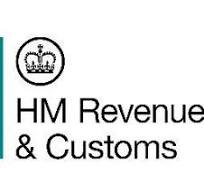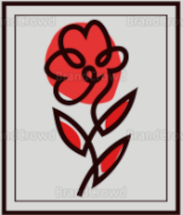VAT Registration Things and How To Avoid It
 You can avoid having to register for VAT. Having to get VAT registered is not the disaster people make it out to be. Using an accounting software package simplifies the whole procedure and you can claim back VAT on your costs. There is also a VAT action a Government can take that will wreck our businesses. Read on….
You can avoid having to register for VAT. Having to get VAT registered is not the disaster people make it out to be. Using an accounting software package simplifies the whole procedure and you can claim back VAT on your costs. There is also a VAT action a Government can take that will wreck our businesses. Read on….
Introduction.
This blog post gives a very brief outline of what VAT Registration means. Do gain advice from an accountant on what I say though, don’t just take my word for it as I could be wrong.
It doesn’t matter if you operate as a sole-trader or a limited company, once your sales amount (sales being ALL money in, not profits) hit the VAT threshold, or think you will hit the VAT threshold (currently £85,000.00) in the current financial year then you must register for VAT. You can voluntarily register if you wish at any time to get the “benefits” of VAT registration, and there are some. You can also avoid registering by altering your business.
The Government Wrecking Ball
Our VAT registration threshold is the highest in the EU (I know we are out). In Germany, for instance, it is about £20,000 and in Spain its a great big NADA – all business must register.
The Government desperately needs more money, and one way it could get it is by reducing the VAT registration threshold. Look at your figures and see what would happen if the VAT registration threshold was reduced to £65,000.00 or even £45,00.00. I would suggest that you see if you can raise your prices a bit now so that you can absorb some of any VAT changes later
Some Quick Definitions.
VAT stands for Value Added Tax. VAT regulations talks about Input VAT and Output VAT, and this is rather confusing. INPUT VAT is the VAT you pay on bills you receive for products or services COMING IN to you – YOUR PURCHASES. OUTPUT VAT is the VAT that you add to products or services GOING OUT from you – YOUR SALES. I prefer the term VAT IN – money coming in from your customers and VAT OUT – money you pay your suppliers.
Assuming You Are Not VAT Registered.
Many of the invoices and receipts you receive for things you buy – paint, brushes, canvases, venue hire, studio rental, expenses etc. will have line items of the cost of what you have bought (including delivery) and it usually shows the total cost (the net cost). Immediately after the total cost there will be a line that says something like “VAT (20%)” and the cost of the VAT. The total price you pay is the cost of the products plus 20% VAT.
You must never add VAT to your invoices unless you are VAT registered.
On VAT Registration.
Once registered you will receive a VAT number, which must be visible on your invoices or sales receipts. You: Choose the VAT accounting method, add VAT at the Standard Rate (currently 20%) to your invoices, calculate the amount of VAT you owe HMRC (or what they owe you) at the end of every VAT Quarter, file VAT returns and pay any VAT to HMRC. HMRC do pay you back quickly if they owe you money by the way.
Yes, you act as a tax collector for HMRC, but in return they give you a short term loan of their money to help with your cash-flow. Matters are much simplified if you use an accounting software package such as mentioned in an earlier blog post. Just change the relevant settings and the software does it all for you.
Your VAT Number.
This is a unique number that is only given to you. Once you register for VAT, every invoice or sales receipt that you issue MUST have the VAT number clearly visible. You should also have it on any letter or communication that you send out, whether snailmail or email.
VAT Accounting Method.
You can use the Cash Accounting method which involves calculating VAT liability on the actual money you have been paid, and the actual money you have paid out. You could also use the Accrual Accounting method which calculates VAT based on the invoices you have sent out (whether paid or not) and the bills you have received (whether you have paid them or not). The recommendation is that if you don’t give credit terms then the Accrual Accounting method is probably the best method.
Adding VAT At The Standard Rate To Your Invoices.
You don’t actually have to add VAT at the standard rate (currently 20%) to your ticket price, you could absorb some or all of the VAT within your accounting, but you MUST add a line item of VAT equivalent to 1/6th of the total invoice cost to your invoices.
If your ticket prices are £30.00, and you pass on all the VAT cost then your ticket price must rise to £30.00 + £6.00 VAT = £36.00; you still keep the £30.00. If you decide to absorb all the VAT then your ticket price then becomes £25.00 + £5.00 VAT = £30.00; you just get to keep £25.00.
Calculating The VAT You Owe, Or Are Owed By, HMRC.
You normally calculate VAT figures every three months, though there are some small business schemes that simplify Vat calculations, and more about that later.
So, quarterly calculations. You have all this money come in, and you have to give 1/6 of it (VAT at 20%) to the Government. But you have also paid out VAT to your suppliers to the value of 1/6 of what you have paid out. Take the VAT you have taken in, subtract from that the VAT you have paid out and the difference is what you pay HMRC.
Quarterly sales of £20,000.00 + VAT = £4,000.00 VAT in. If you bought supplies (paint, brushes, hire charge, studio hire charge) to the value of £10,000.00 + VAT = £2,000.00 VAT. So, £4,000.00 – £2,000.00 = £2,000.00 that you have to pay HMRC.
You then submit your quarterly VAT return and pay HMRC what you owe them, or they pay you what they owe you.
You couldn’t reclaim VAT on purchases before VAT registration, but you can now. This means that you could absorb some of the VAT and raise your prices by less than 20% and still make the same amount of money.
Avoiding VAT Registration.
Avoiding VAT registration is not evading VAT registration. One is legal and the other isn’t, and the difference between them is a prison wall. Take proper advice regarding my suggestions.
One way of possibly avoiding VAT registration is seeing if you can split your Art/Paint and Sip business into 2 separate entities. You might have a part of your income as commissioned work, and part of your income from your Paint and Sip business. Look at separating the two. Maybe start a Limited Company for your commissioned work, and continue to run the Paint and Sip events as a Sole Trader. This is a legitimate way of avoiding VAT registration.
You would need to totally separate both entities though, and that means different bank accounts, different phone numbers and preferably different business addresses, your accountant would probably allow you to have his/her address as your registered office for a Limited company – it’s common. Setting up a Limited Company is easy, but it does add a little more to your annual accounting costs.
In this example ALL costs (paint, brushes, advertising etc.) and income associated with the commissions you do are run through the Limited Company, and all the costs (paint, brushes, advertising etc.) of the Paint and Sip business are run through the Sole-Trader side. If you want to split some costs, such as studio/room hire, have the full cost paid by one entity, and that entity formally invoices the other entity for a share of the cost. If you set up a Limited Company for both entities then you might get away with just one phone number provided you paid all the phone costs personally, and not charge them to one of your businesses. Ask your accountant the best way to do this.
A Few Other Things.
Once registered then you can get back VAT on the expenses you personally claim back (as mentioned in a previous blog post). Be aware though that you can only claim VAT back on the fuel element of your mileage allowance, not the full mileage allowance. VAT on domestic fuel and power is 5%, so as a Sole Trader you can only claim back 5% VAT and not 20% VAT on your heating allowance. Some items, such as some printed materials, are not subject to VAT.
If you import items from abroad then you will probably have to pay Import VAT as it enters the country. The goods come in and the courier wants the Import VAT plus costs off you before they deliver the goods. If so, then you MUST give the courier your VAT number so they can arrange for you to have a Form C79 sent to you. The C79 allows you to claim back the Import VAT when you do your VAT return.
You cannot claim back the VAT on any form of business entertainment for customers. Buy, you can take a few customers out for a drink, claim back as expenses the money you paid out on them (not your own drinks), but not reclaim the VAT. You can though claim back the VAT on entertainment for your team.
VAT Flat Rate VAT Scheme.
The VAT Flat Rate Scheme simplifies the VAT administrative burden for small businesses. You charge VAT at the Standard Rate to your customers, but you pay HMRC a fixed percentage of your turnover to them. This fixed percentage for Art related activity is probably 12%. It sounds a good idea but means that you cannot claim back VAT you actually pay out and you might be paying out more than the 8% difference. Let your accounting software do the work and do the full VAT accounting process.
I hope that this has been of help to you and if you have any questions, or would like to point out where I have got it wrong then please email me.
